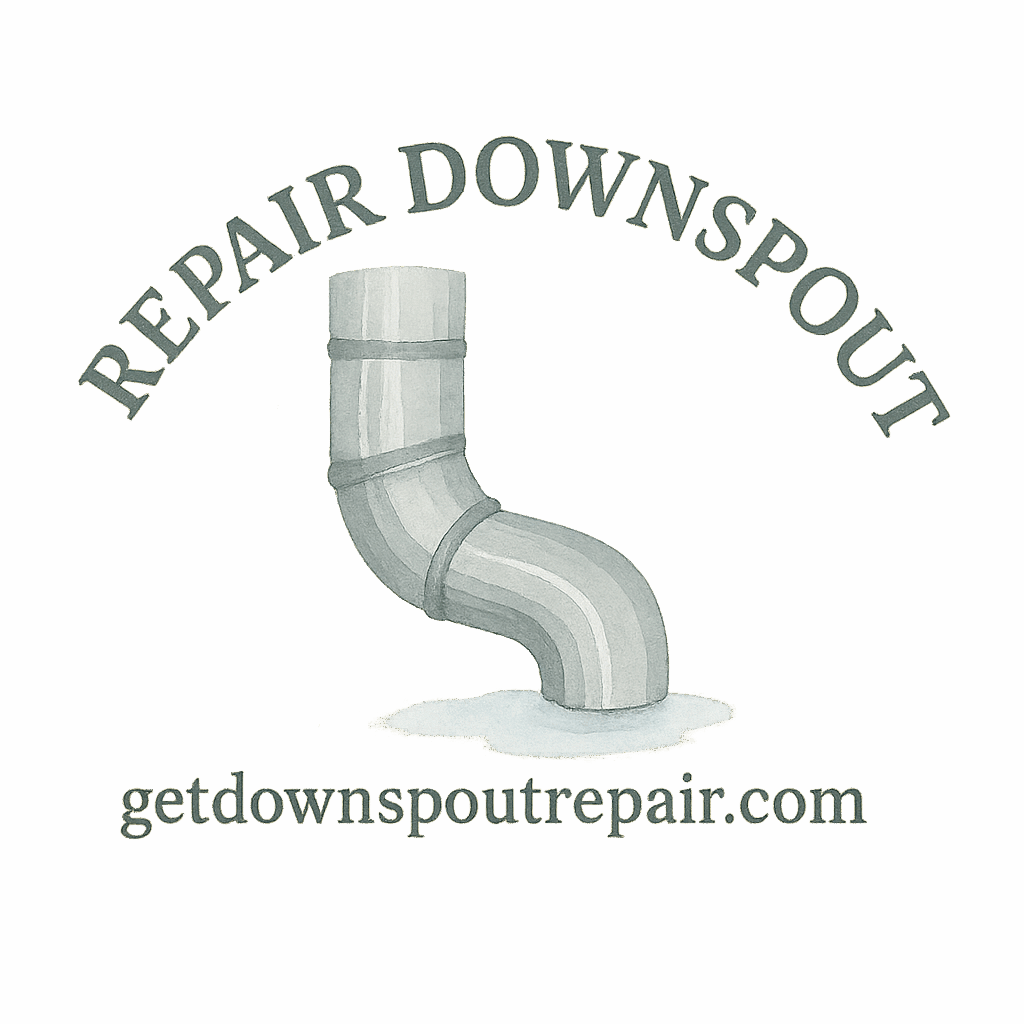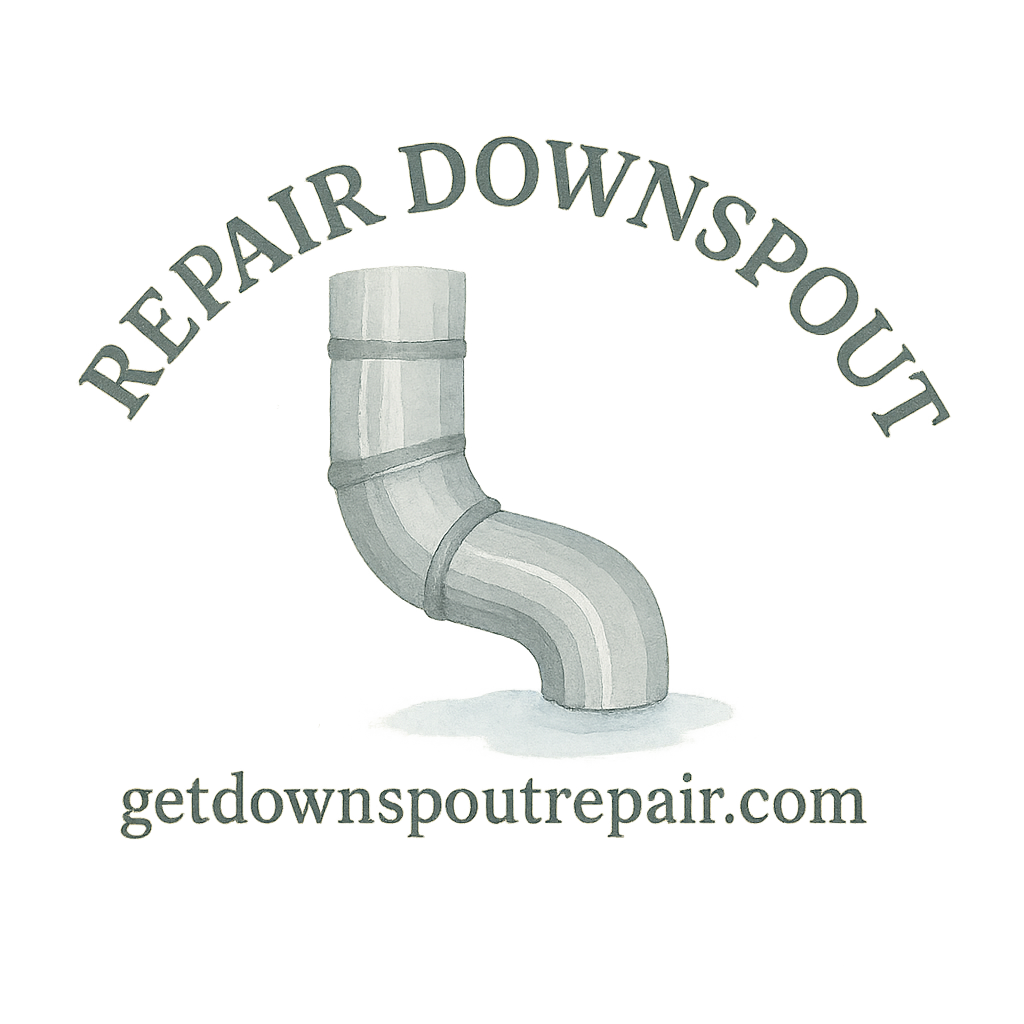Introduction: Why Downspout Repair Matters
Your downspouts are the unsung heroes of your home. They quietly redirect rainwater away from your foundation, siding, and landscaping. But here’s the catch—when they stop working, you’re looking at costly water damage and possibly even foundation problems. That’s why downspout repair is more than just a chore; it’s home protection at its finest.
In this guide, we’ll walk through 8 DIY downspout repair strategies professionals use. These aren’t just quick fixes. They’re proven methods that homeowners can handle with the right tools, patience, and guidance.
For additional repair basics, check out Downspout Repair Basics.
Understanding Downspout Repair Basics
Common Causes of Downspout Problems
Most downspout problems boil down to three things:
- Clogs from leaves, dirt, or debris.
- Leaks and cracks from weather or aging.
- Poor installation causing improper drainage.
Neglecting these issues can quickly spiral into bigger problems. In fact, many homeowners underestimate how fast water damage can accumulate. (See more at Downspout Neglect).
Signs You Need Downspout Repair
- Pools of water near your foundation.
- Downspouts pulling away from the wall.
- Visible cracks or holes.
- Water overflowing from gutters instead of draining properly.
If you spot these, it’s time to act before minor repairs turn into expensive fixes.
Strategy 1: Clearing Clogs the Professional Way
Tools Experts Use to Unclog Downspouts
Professionals don’t rely on guesswork. They use:
- A sturdy ladder.
- Plumber’s snake or auger.
- High-pressure garden hose.
- Gutter scoop and gloves.
For budget-friendly options, check our DIY Tools Guide.
How to Safely Remove Blockages
Start by flushing the downspout with water. If it’s still clogged, insert a plumber’s snake and rotate it to break up debris. Finally, run water again to ensure everything flows smoothly.
Pro tip? Always work from the bottom up—this prevents compacting debris further inside.
Strategy 2: Sealing Leaks and Small Cracks
Choosing the Right Sealants and Tapes
Not all sealants are equal. Pros prefer:
- Silicone caulk for small cracks.
- Aluminum tape for temporary fixes.
- Roofing cement for heavy-duty sealing.
Visit Quality Products to explore trusted repair materials.
Step-by-Step Leak Repair Process
- Clean the area thoroughly.
- Dry it to ensure adhesion.
- Apply sealant or tape directly over the crack.
- Let it cure before running water through.
This method can extend your downspout’s life by years if done properly.
Strategy 3: Adjusting Angles for Proper Flow
Checking for Incorrect Pitch
A downspout must slope slightly downward to carry water away effectively. Too flat? Water stagnates. Too steep? It erodes soil.
How Pros Correct Angle Issues
Professionals use levels to measure pitch and brackets to resecure the downspout. Adjust until water flows at a steady, controlled pace.
For more tips, see Drainage Protection.
Strategy 4: Reattaching Loose Downspouts
Materials for Secure Reattachment
Experts rely on:
- Sheet metal screws.
- Downspout straps.
- Wall anchors for masonry.
Find reliable options in our Repair Tools Guide.
Preventing Future Loosening
Loose downspouts are usually a result of weather damage. Installing straps every 4–6 feet prevents sagging and detachment.
Strategy 5: Extending Downspout Length
Why Extensions Are Crucial for Drainage
If your downspout ends too close to your foundation, water seeps into your basement. Professionals always recommend extending downspouts at least 4–6 feet away.
Installing Extensions Like a Pro
You can use flexible plastic or rigid metal extensions. Attach them using screws or snap-on connectors. Ensure the end points slightly downhill for effective flow.
Learn more about cost-effective materials at Costs & Materials.

Strategy 6: Replacing Damaged Sections
When to Replace Instead of Repair
If rust, dents, or cracks cover more than 25% of a section, repair won’t cut it—it’s time to replace.
Cutting and Fitting New Pieces
- Measure the damaged section.
- Cut the new piece with tin snips.
- Secure it with rivets or screws.
- Seal seams with caulk for waterproofing.
Need a step-by-step tutorial? See Repair Guide.
Strategy 7: Installing Splash Blocks or Diverters
How Splash Blocks Protect Foundations
Splash blocks and diverters prevent soil erosion and foundation leaks by dispersing water more evenly.
Professional Tips for Proper Placement
Place splash blocks at least 3 feet from your home’s foundation and tilt them slightly away for maximum effect.
For immediate solutions, visit Repair Now.
Strategy 8: Preventing Clogs with Guards and Screens
Best Types of Guards for DIY
- Mesh gutter screens.
- Foam inserts.
- Hinged covers for easy cleaning.
Check the latest options at Prevent Clogging.
Maintenance Tips for Long-Term Protection
Even with guards, inspect your system twice a year—spring and fall. Clean out any debris that sneaks through.
Extra Tips from Professionals
Seasonal Downspout Maintenance Checklist
- Spring: Check for winter ice damage.
- Summer: Ensure extensions handle heavy rains.
- Fall: Clear leaves before clogging.
- Winter: Prevent ice dams with insulation.
Cost-Saving Tips for DIY Repairs
Buy tools once, use them forever. Many pros recommend investing in Premium Tools to save money in the long run.
When to Call a Professional for Help
DIY repairs are great, but if your downspout is collapsing, or water is already damaging your foundation, it’s time to seek Professional Help.
A licensed contractor has the training, insurance, and experience to handle complex cases.
Conclusion
Downspout repair isn’t rocket science, but it does require patience and attention to detail. By following these 8 DIY downspout repair strategies professionals use, you’ll save money, protect your home, and gain valuable hands-on skills.
Remember, the goal is prevention—don’t wait for water damage before acting. Your home deserves the same care professionals would give it.
FAQs
Q1: How often should I clean my downspouts?
At least twice a year—spring and fall are best.
Q2: What’s the most common cause of downspout damage?
Clogging from leaves and debris, especially in fall.
Q3: Can I seal leaks with duct tape?
Duct tape is only temporary. Use silicone or roofing cement for durability.
Q4: How long should a repaired downspout last?
With proper maintenance, a repaired downspout can last 5–10 years.
Q5: Do I need special tools for DIY repairs?
A ladder, screwdriver, sealant, and plumber’s snake cover most jobs.
Q6: Are downspout extensions necessary?
Yes, they prevent water from pooling near your foundation, protecting your home.
Q7: When should I replace my downspout instead of repairing it?
Replace when damage is widespread or rust covers large sections.


